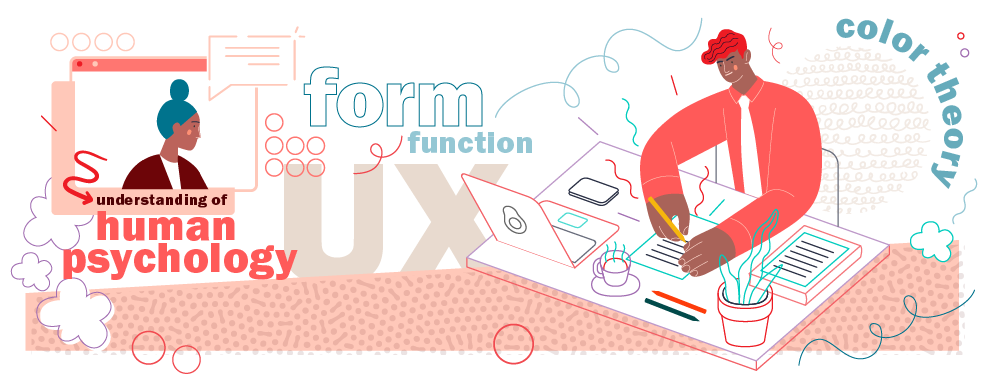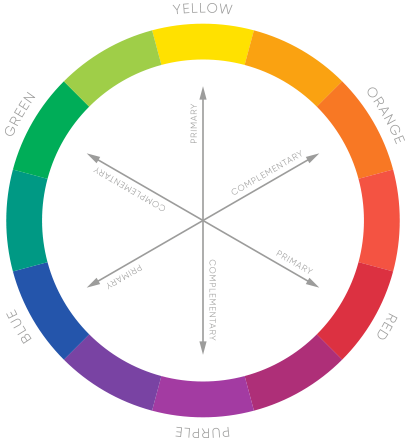
Defining Art versus Design
I could begin this rant, I mean blog, by clarifying the definition of subjective versus objective. But, I think a more fitting starting point would be defining the differences between art and design. When I introduce myself as a designer for an integrated marketing company, I’m often met with a similar reaction: “Oh, you’re an artist!” There are certainly other creatives that self-identify as designers by employment classification but as artists by nature (see my talented co-worker Delaney Smith’s brilliant fiber art portfolio). However, artist is never a moniker I’ve felt comfortable adopting, even from the earliest days of my design education.
Art is an entirely personal manifestation created (ideally) independently of outside influences – and without regard to them, too. The product of artistry is the expression of an individual point of view. That POV is represented in whatever medium the artist feels best conveys it. In that regard, art is subjective (based on personal feelings, tastes or opinions).
Now, the title of “designer” strongly resonates with my sense of self. One of our first employee surveys at red thread asked us to describe our job in simplistic terms a five-year-old would understand. I summed up my role as “solving little puzzles.” (BTW, if you haven’t checked us out on Facebook, LinkedIn, and Instagram yet, you’re missing out on marketing tips, interesting industry insights, and tales from the folks affectionately known as the tassel, who write this blog – we’ll wait while you go give us a follow….)
So how can we define design? Product Experience Designer and Design Systems Lead at Venmo, Peter Michael Allens, explains it well:

“Design is about successfully communicating functional ideas into concrete forms to an intended audience.
It’s about everything but the designer’s ideological or emotional interpretation.”
This definition of design includes the importance of paying attention to the product’s function when creating the form above all else – in fact, it insists on it. I’m sure everyone’s heard the old adage “form follows function.” While that phrase was originally coined in reference to architecture, when applied to design in general, it reinforces the idea of design as objective (not influenced by personal feelings or opinions in considering and representing facts). Design is created based on observed data.
It may sound like I’m arguing semantics, but defining vernacular is an important first step. It lays the groundwork for understanding the more intricate details of why design (and design for marketing in particular) is less of a “soft skill” and more of a systematic process of construction.
The Role Qualitative Data plays in Good Marketing Design
“Can you make the logo bigger?”
Designers everywhere immediately cringe at those words. Some may even remember this gem of a song that was floating around the internet years ago that is as ridiculous as the off-handed request feels.
If you’ve hired a competent designer, the size and placement of all the elements in said design weren’t subject to a creative impulse. Every aspect of the design has been considered and placed with purpose. Design for marketing is a methodical process instead of subjective exploration. Because of this, qualitative data is imperative to whether your outcome will be successful.
The Goods: What a Client Should Provide to Ensure Success
Like I said when I equated my job to solving puzzles, I’m looking for a solution when I’m designing. I’m attempting to arrive at a conclusion that fits a need. To do that, I need information. The more complete information I’m given about the “problem,” the better the solution will be. My bag of tricks does include the basics:
- a comprehensive, art school education that emphasized the importance of making purpose-driven design decisions;
- proficiency in basic design principles and in the technical tools used to help me execute them; and
- the communication skills to properly express said decisions in ways that are meaningful to my client.
However, I still heavily rely on the client for background information to provide the necessary data to make decisions. When looking at marketing design in particular, knowing (and conveying) the following to your supporting design and marketing team is vital:
- A detailed design brief. This includes general information (scope of project in terms of budget, audience, timeline) but also additional information about your company (you can start with your Purpose – and if you need help figuring out why that’s important, we have a four-part series that can bridge that gap). Include context for the design and any constraints you may be facing.
- Intended outcome or goal of the project. Especially in digital marketing, this can help you arrive at the ever-important call to action.
- Your company’s brand guide. This is extremely important! Not only does having a brand guide make crafting an integrated marketing campaign much easier, it will easily provide the context for how all communications from your company, visual or otherwise, should be executed. It leaves little room for ‘subjective’ decisions.

The Skills: What a Good Designer Does for Marketing Design
According to an article by Forbes discussing the downfall of subjective marketing decisions,
“Enlightened leaders are starting to [express], ‘It doesn’t matter what I think. What matters is what the customer thinks.’”
A good designer (i.e. one that has sought out the qualitative data before proceeding to construct your design) will bring at minimum those three bullet points I mentioned previously. A great designer will shed personal preference and will consider factors that influence human behavior to construct the most effective deliverable.
Color Theory Knowledge
Psychology and design have more points of intersection than one may realize. Color is one of the most obvious design decisions. Color plays both a psychological and emotional role in design. There are many articles on the role colors play in design – and it goes much deeper than your stakeholder’s favorite color. The most basic starting point should involve the aforementioned brand guide, adhere to accessibility standards, and evolve based on the marketing’s end goal.

Consideration of User Experience
User experience should also be heavily considered when thinking through any process that involves human behavior. (Side note: if you need further clarification on this or any of the other industry lingo featured in our blog, you can check out our handy glossary of digital jargon here.)
American professor Don Norman is sometimes referred to as the “father” of user experience. Best known for his work, The Design of Everyday Things, Norman details seven fundamental design principles that help create the tie between human behavior and smart, functional design. These principles (that can be applied to all areas that are designed, even physical spaces) were nicely summed up by UX consultant Ian Batterbee:
- Discoverability makes it easier to understand where to perform actions.
(example: a clearly visible and understandable website navigation menu) - Feedback communicates the response to our actions.
(example: response dialogue when a form has been successfully submitted) - Conceptual models are a simple explanation of how something works.
(example: an app on-boarding experience that demonstrates its intended use) - Affordance is the perceived action of an object.
(example: a door with a handle to indicate pull; a flat plate to indicate push) - Signifiers tell us exactly where to perform an action.
(example: arrows in artwork that point to call to action buttons on social platforms) - Mapping is the relationship between the controls and the effect they have.
(example: using a sliding scale to adjust brightness on your phone) - Constraints help restrict the kind of interactions that can take place.
(example: having an overly dense sign-up form for a simple interaction)
Acknowledgment of Human Psychology & Behavior
A lesser-known psychological principle related to number seven on Norman’s list that helps shape effective marketing design is Hick’s Law. Psychologist William Hick and his research partner Ray Human postulated a very important aspect of human behavior when dealing with design:
the time it takes to make a decision increases with the number and complexity of choices.
This idea is potentially obvious but instrumental when thinking about snap decisions, like the ones that occur in the digital advertising arena. When your designer applies this ideology, they’re guaranteeing your ad has a clear call to action button. They’re making sure your billboard has only the information that can be absorbed in the 1-2 seconds a driver has to view it. (Hopefully, designers won’t use their powers for evil, as witnessed in the dreaded dark patterns that are becoming more prevalent amongst web and app development as of late.)
The Role Quantitative Data plays in Good Marketing Design
Going back to the idea of “form follows the function,” there are some conflicting schools of thought on exactly what emphasis should be placed on particular design aesthetics. There are definitely benefits to creating a unified brand presence amongst multiple channels (which we’ve discussed in our blog on integrated marketing) that shouldn’t be dismissed.
A Stanford University study even discovered that a website’s aesthetics played the most influential role in helping the user establish the site’s credibility – even greater than the site’s structure, quality of information, and the company’s reputation. But there are also some valid arguments for the popularity of sites like Craigslist or Reddit that have achieved long-term success and a large user base while being, well…less than eye-pleasing.
But what’s great about the digital world as we currently know it is our ability to gather data! Luckily, there are many tools we can use to help us determine whether our initial design decisions are making the cut. Just like any other systematic process, good marketing design can be confirmed or revised based on this quantitative data. Some helpful tools that can provide insight include:
- A/B testing: The process of running two different versions of a social post or digital ad to target different groups of an audience to see which version is the most effective. The content that is deemed most efficient will be the one that is used.
- Experimental Design: Taking A/B testing one step further, experimental design organizes data and uses different statistical tests to best determine a causal relationship from users. In other words, it can allow companies to test different combinations of elements to find out which set has the highest impact.
- Accessibility Adherence: Making sure your digital marketing efforts are accessible by all – including people with disabilities. There are many guidelines that can help in these efforts, but a couple we’ve found handy are WAVE Web Accessibility Evaluation Tool and Color Review.
Leave it to the Professionals
As I’ve hopefully demonstrated, design for marketing is not merely an additional creative outlet for the creatives tasked with development. Methodical in approach and measurable in results, successful design for marketing can yield much greater returns than satisfying a stakeholder’s aesthetic preferences. You can see some examples of such marketing by scoping out some of our case studies. And if you’re ready to leave it to the professionals, just hit the button below to connect!